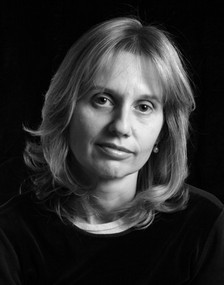
Tatjana Ristić (Belgrade, Serbia) acquired M. Mus. Degree (1994) in composition from the Faculty of Music in Belgrade. She studied with Srđan Hofman. She specialized in composition at the Hochschule für Musik in Freiburg (Germany) with Brian Ferneyhough, and at Tchaikovsky Conservatory in Moscow (Russia) with Yuri Holopov. She acquired specialization in audio-visual communication at the University Pompeu & Fabra in Barcelona (Spain).
The broad field of professional interest reflects in Ristić’s artistic engagement as well as in her scientific and pedagocical work which has been confirmed by The Italian Cultural Centre Award for contribution to the development of the European artistic production (2007). As a composer and artistic director she participated at numerous festivals in Russia (Moscow, 1987), Japan (Tokio, 1995), Serbia (Belgrade, 1996), Italy (Rome, 2003), England (London, 2003), Norway (2004, 2008), Spain (Barcelona, 2008), Germany (Munich, 2005, Berlin, 2005), USA (Washington, 2007), Luxembourg (2009). She was a guest-lecturer and gave courses in Italy, Spain, Switzerland, Germany, Israel, Turkey and Norway. She composed music for different ensembles and media. She worked in the field of applied music writing music for theatre, television and film, and had also realized a number of video projects and instalations. Her works have been performed throughout Europe, Asia and America. She works as associate professor at the Agder University (Norway).
Timenoid, for piano
The title I have used for this composition according the Urban Dictionary refers to:
A Timenoid is a ’Clockwork Demon’ or a ’Clockwork Devil’. A demon that looks humanoid on the outside, but has a clockwork inside, built up of cogs, bolts and gears. None the less, this type of creature has still been known to feel human emotions, such as Love and Hate.
Music is meant to sound free. The goal was to imagine a situation in which improvising musician could communicate with their audience telepathically. It is not important to be precisely synchronized within measures, but it would be nice if the player follows rhythm. It is often more important to get the feel right than to play metronomically, exactly as it is written. A little bit of “faking it” is acceptable and even encouraged. The transitions between the movements should be as seamless as possible. Duration of the composition is 9 minutes.


